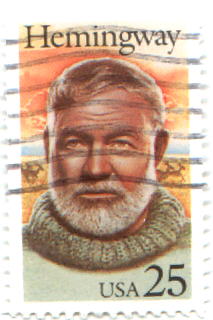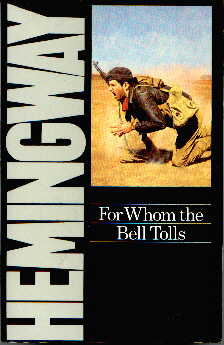Ernest Hemingway
 Few writers have lived as colorfully as Ernest Hemingway, whose
career could have come out of one his adventurous novels. Like
Fitzgerald, Dreiser, and many other fine novelists of the 20th
century, Hemingway came from the U.S. Midwest. Born in Illinois,
Hemingway spent childhood vacations in Michigan on hunting and
fishing trips. He volunteered for an ambulance unit in France
during World War I, but was wounded and hospitalized for six
months. After the war, as a war correspondent based in Paris, he
met expatriate American writers Sherwood Anderson, Ezra Pound, F.
Scott Fitzgerald, and Gertrude Stein. Stein, in particular,
influenced his spare style.
Few writers have lived as colorfully as Ernest Hemingway, whose
career could have come out of one his adventurous novels. Like
Fitzgerald, Dreiser, and many other fine novelists of the 20th
century, Hemingway came from the U.S. Midwest. Born in Illinois,
Hemingway spent childhood vacations in Michigan on hunting and
fishing trips. He volunteered for an ambulance unit in France
during World War I, but was wounded and hospitalized for six
months. After the war, as a war correspondent based in Paris, he
met expatriate American writers Sherwood Anderson, Ezra Pound, F.
Scott Fitzgerald, and Gertrude Stein. Stein, in particular,
influenced his spare style.
After his novel The Sun Also Rises (1926) brought him fame, he covered the Spanish Civil War, World War II, and the fighting in China in the 1940s. On a safari in Africa, he was badly injured when his small plane crashed; still, he continued to enjoy hunting and sport fishing, activities that inspired some of his best work. The Old Man and the Sea (1952), a short poetic novel about a poor, old fisherman who heroically catches a huge fish devoured by sharks, won him the Pulitzer Prize in 1953; the next year he received the Nobel Prize. Discouraged by a troubled family background, illness, and the belief that he was losing his gift for writing, Hemingway shot himself to death in 1961.
 Hemingway is arguably the most popular American novelist of this
century. His sympathies are basically apolitical and humanistic,
and in this sense he is universal. His simple style makes his
novels easy to comprehend, and they are often set in exotic
surroundings. A believer in the "cult of experience," Hemingway
often involved his characters in dangerous situations in order to
reveal their inner natures; in his later works, the danger
sometimes becomes an occasion for masculine assertion.
Hemingway is arguably the most popular American novelist of this
century. His sympathies are basically apolitical and humanistic,
and in this sense he is universal. His simple style makes his
novels easy to comprehend, and they are often set in exotic
surroundings. A believer in the "cult of experience," Hemingway
often involved his characters in dangerous situations in order to
reveal their inner natures; in his later works, the danger
sometimes becomes an occasion for masculine assertion.
Like Fitzgerald, Hemingway became a spokesperson for his generation. But instead of painting its fatal glamour as did Fitzgerald, who never fought in World War I, Hemingway wrote of war, death, and the "lost generation" of cynical survivors. His characters are not dreamers but tough bullfighters, soldiers, and athletes. If intellectual, they are deeply scarred and disillusioned.
His hallmark is a clean style devoid of unnecessary words. Often he uses understatement: In A Farewell to Arms (1929) the heroine dies in childbirth saying "I'm not a bit afraid. It's just a dirty trick." He once compared his writing to icebergs: "There is seven-eighths of it under water for every part that shows."
Hemingway's fine ear for dialogue and exact description shows in his excellent short stories, such as "The Snows of Kilimanjaro" and "The Short Happy Life of Francis Macomber." Critical opinion, in fact, generally holds his short stories equal or superior to his novels. His best novels include The Sun Also Rises, about the demoralized life of expatriates after World War I; A Farewell to Arms, about the tragic love affair of an American soldier and an English nurse during the war; For Whom the Bell Tolls (1940), set during the Spanish Civil War; and The Old Man and the Sea.
